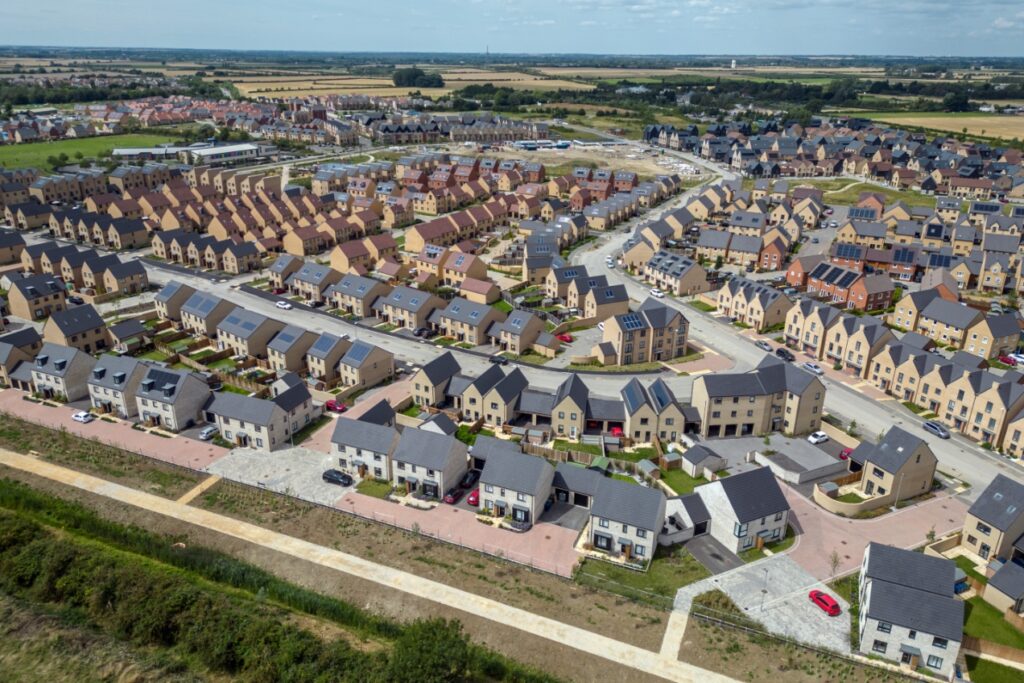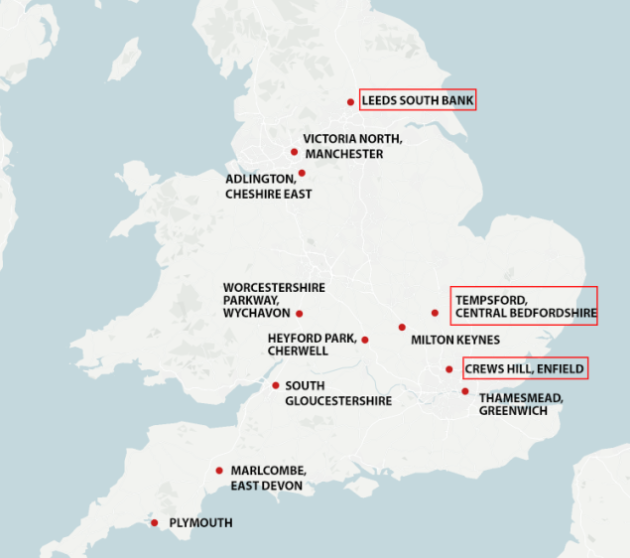- BY Kevin Barry BSc(Hons) MRICS
- POSTED IN Latest News
- WITH 0 COMMENTS
- PERMALINK
- STANDARD POST TYPE


The resurgence of interest in building new towns or large-scale urban developments in the UK and Ireland
The resurgence of interest in building new towns or large-scale urban developments in the UK and Ireland stems from a combination of acute housing shortages, rapid population growth, economic pressures, and the need for sustainable, infrastructure-supported communities. This approach echoes post-war efforts in the UK, where new towns were created to house growing populations and stimulate recovery, but it’s now adapted to modern challenges like affordability crises, urban sprawl, and environmental goals.
Below, I’ll break it down by country and explain the key drivers behind this trend’s growth.
Developments in the UK
In the UK, particularly under the Labour government elected in 2024, there’s a renewed push for a “new generation” of new towns as part of a broader strategy to deliver 1.5 million homes over five years. The New Towns Taskforce, established in 2024, recently published its report recommending up to 12 new towns or large-scale developments across England, each with at least 10,000 homes, focusing on areas like Bedfordshire, London, Leeds, Manchester, and Milton Keynes.
Three priority sites (in Bedfordshire, London, and Leeds) are slated to begin construction before the next general election, with a New Towns Unit coordinating public-private funding for essential infrastructure like schools, GP surgeries, and transport. These plans draw lessons from historical new towns while emphasizing connectivity, sustainability, and economic integration—such as linking to tech hubs or rail corridors like East West Rail.
The growth in this concept is tied to England’s severe housing constraints, where demand far outstrips supply, exacerbating affordability issues for families and workers. The government views new towns as tools for balanced economic growth, attracting investment, and reducing pressure on overcrowded cities like London.
For instance, sites are chosen for their potential to support high-value industries, with features like rapid transit systems and green spaces to make them attractive places to live.
This marks a shift from the stagnation under previous administrations, driven by what Labour calls the “worst economic inheritance since World War II,” including stalled planning reforms and underinvestment in infrastructure.
Developments in Ireland
Ireland’s approach is somewhat different, focusing less on standalone new towns and more on “compact growth” within or adjacent to existing urban areas to curb sprawl and maximize efficiency. The National Economic and Social Council (NESC) released a 2025 report emphasizing the need to deepen compact growth, which involves higher-density development in cities, towns, and villages, supported by public investment in infrastructure like water, energy, and transport.
This includes major urban transformation projects and unlocking land for housing through rezoning powers, as seen in Budget 2025’s record €6 billion allocation for housing and the updated National Development Plan, which aims to deliver over 50,000 homes annually on average.
While not explicitly building entirely new towns, initiatives like rezoning land for thousands of homes (e.g., in Co. Wicklow) and revising the National Planning Framework reflect a similar state-led drive to expand settlements strategically.
The Irish construction sector is projected to recover in 2025, fueled by domestic economic resilience and government targets to address supply shortages.
Key Reasons for the Growth in This ConceptThe revival of new towns or equivalent large-scale developments in both countries is propelled by several interconnected factors:
- Housing Crisis and Population Pressures: Both nations face chronic undersupply amid rising demand. In the UK, millions are locked out of homeownership due to high prices and limited stock; in Ireland, similar issues are compounded by rapid population growth from immigration and economic booms. Governments see planned developments as a way to scale up supply quickly and affordably.
- Economic and Regional Development: New towns are positioned as engines for growth, supporting industries like tech, research, and manufacturing. In the UK, they’re integrated with transport investments to boost productivity; in Ireland, compact growth aims to create walkable neighborhoods that attract businesses and workers.
- Sustainability and Anti-Sprawl Goals: Modern plans prioritize eco-friendly designs, carbon-neutral elements, and better land use to combat climate change and urban expansion. This aligns with EU and national policies for greener living.
- Political and Policy Shifts: In the UK, Labour’s 2024 victory enabled bold reforms, including mandatory housing targets and brownfield redevelopment funding. In Ireland, updated frameworks and budgets reflect a proactive response to post-pandemic recovery needs. Public-private partnerships are increasingly central to funding these ambitious projects.
Overall, this trend represents a return to ambitious, government-orchestrated urban planning to tackle long-standing issues, though challenges like local opposition, funding, and delivery timelines remain. If successful, it could transform housing landscapes in both countries over the coming decades.
